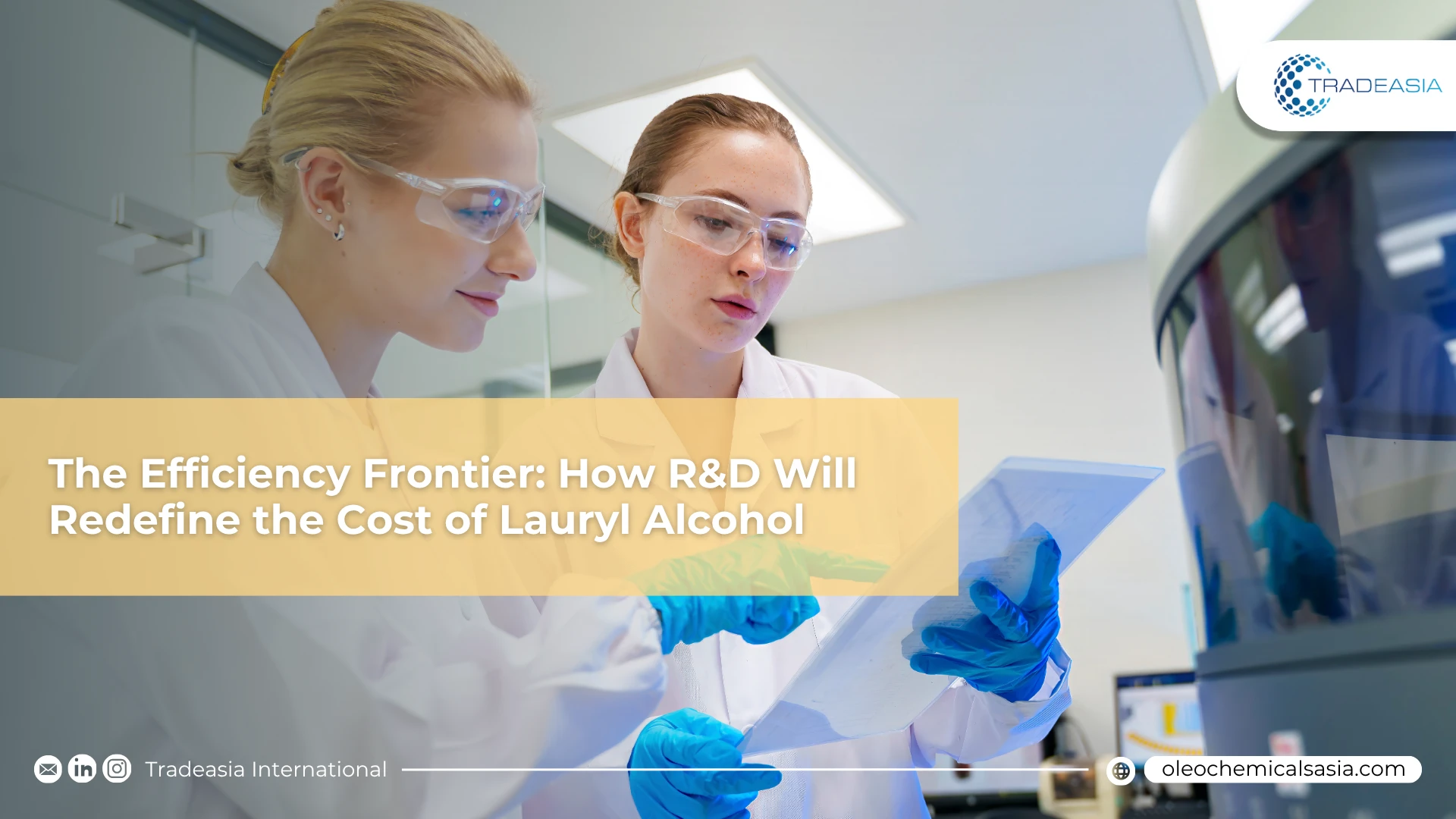The Efficiency Frontier: How R&D Will Redefine the Cost of Lauryl Alcohol

Table of Content
-
The Catalyst Arms Race: Chasing Purity and Lower Pressure
-
The 'Green Hydrogen' Imperative
In a high-volume commodity market like Lauryl Alcohol, the most impactful R&D isn't always about discovering a new product; it's about relentlessly optimizing the process. For a large-scale oleochemical producer, a single 1% gain in conversion efficiency from Lauric Acid (C12 Acid) to Lauryl Alcohol can translate into millions of dollars in annual savings.
This focus on efficiency is precisely what separates market leaders from the pack. At Tradeasia International, we thrive on this complexity. We leverage our deep connections in the global palm and oleochemical world to track these process innovations, ensuring our partners benefit from the most cost-effective and sustainable sourcing strategies available.
The Catalyst Arms Race: Chasing Purity and Lower Pressure
The first R&D front is the "catalyst arms race." The industry is actively moving away from traditional copper chromite catalysts, which face environmental scrutiny. The focus is now on developing novel heterogeneous catalysts (often nickel or noble metal-based) that promise 99.5% selectivity for C12 Alcohol. This minimizes the production of unwanted C10 or C14 byproducts, which dramatically reduces waste and downstream purification costs. Furthermore, these new catalysts are being designed to operate at pressures 15-20% lower than traditional methods, offering significant energy savings on gas compression.
This relentless drive for optimization-getting more value while using less energy-is the defining story of the modern palm industry. It's about maximizing the potential of every single drop of oil, a principle that defines an efficient and responsible supply chain.
The 'Green Hydrogen' Imperative
The second R&D frontier targets the hydrogen source itself. Lauryl Alcohol production is a hydrogenation process, consuming roughly 50-60 kg of hydrogen per metric ton of alcohol. Today, this is almost entirely "grey hydrogen" (from natural gas), which generates over 500 kg of CO2 emissions for every ton of Lauryl Alcohol produced. R&D is now aggressively pursuing the integration of "green hydrogen" (from electrolysis). With green hydrogen costs projected to fall 50-60% by 2030 (to below $2/kg), the concept of a truly carbon-neutral, palm-derived Lauryl Alcohol is rapidly moving from the lab to commercial reality.
Sources:
-
Palm-Chemicals.com: Fatty Alcohols Production Process
-
International Energy Agency (IEA): Global Hydrogen Review 2024
-
Journal of Catalysis: "Advances in Selective Hydrogenation of Fatty Acids"

Leave a Comment